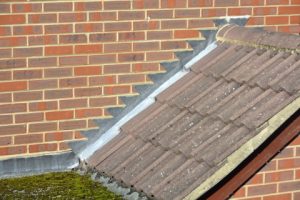Flashing provides protection for components of your roof, and it works in conjunction with your roofing material. Flashing is applied to roofing corners and valleys, as well as objects that jut out through your roof. So let’s talk flashing. What is flashing? How does it work? And where is it used?
Flashing is installed throughout the roof, including all of the following places: 
What Is Flashing?
Flashing is usually built out of metal (it may contain steel, zinc, copper, or aluminum), or it may be built out of plastic or rubber. Flashing is utilized to keep roof components from damage, and to keep the roof waterproof. Without flashing, roofing components (such as a chimney) may come into contact with water which can saturate and damage the component or the structure of the house. In short, flashing keeps your home sound.How Does It Work?
Flashing is connected to various roofing components, and it can be overlapped and connected in order to keep leaks from penetrating the roof or any of the objects on your roof. Flashing can be installed with nails, glue, and caulking in order to waterproof your roof. Where Is Flashing Used?
Where Is Flashing Used?
Flashing is installed throughout the roof, including all of the following places: - Valleys and Joints: Joints throughout your roof structure are more susceptible to penetration from water, as are roof valleys. Roof joints often aren’t water tight, and roof valleys collect more water than the rest of the roof. Flashing ensures that these points on your roof are protected.
- Roof Protrusions: If there’s anything jutting out of your roof, there is flashing to protect it. If, for instance, you have cables that tie into a satellite that’s installed on your roof, flashing can keep the opening for the cable free from water.
- Drip Edging: Drip edging is flashing that is applied to the edges of roofs where there aren’t gutters. This specialized flashing ensures that water doesn’t fall backwards towards the house or roof.
- Chimneys: Chimney flashing is necessary, since water can run right at the base of a chimney. Flashing should be installed to keep water from infiltrating the joint between your roof and your chimney.
- Pipes: It’s likely that your roof has a few pipes which penetrate the surface. For instance, you probably have drain-waste vents which keep pressure from building up in your plumbing. These pipes can compromise a waterproof roof if they aren’t surrounded by flashing. Specialized “pipe boots” can be placed around these pipes in order to protect your roof.
- Kickouts: Kickout flashing is installed at the lowermost joint between your roof and your wall. The kickout flashing ensures that water doesn’t hit your walls.

Your Roofing Experts
Here at Red Dog’s Roofing, we do our utmost to make sure that your roof is completely waterproof. After all, everybody deserves a good roof over their head. So, count on us for your next roofing installation, or for any roofing maintenance you may need. We provide roofing services for folks throughout Fitchburg, Leominster, Gardner, Westminster, Lunenburg, Lancaster, Ashburnham, Princeton, and Sterling. Ready to get started? Don’t hesitate to get in touch with us to schedule an appointment!Tags
Subscribe to Red Dog's Roofing's Blog





Comments